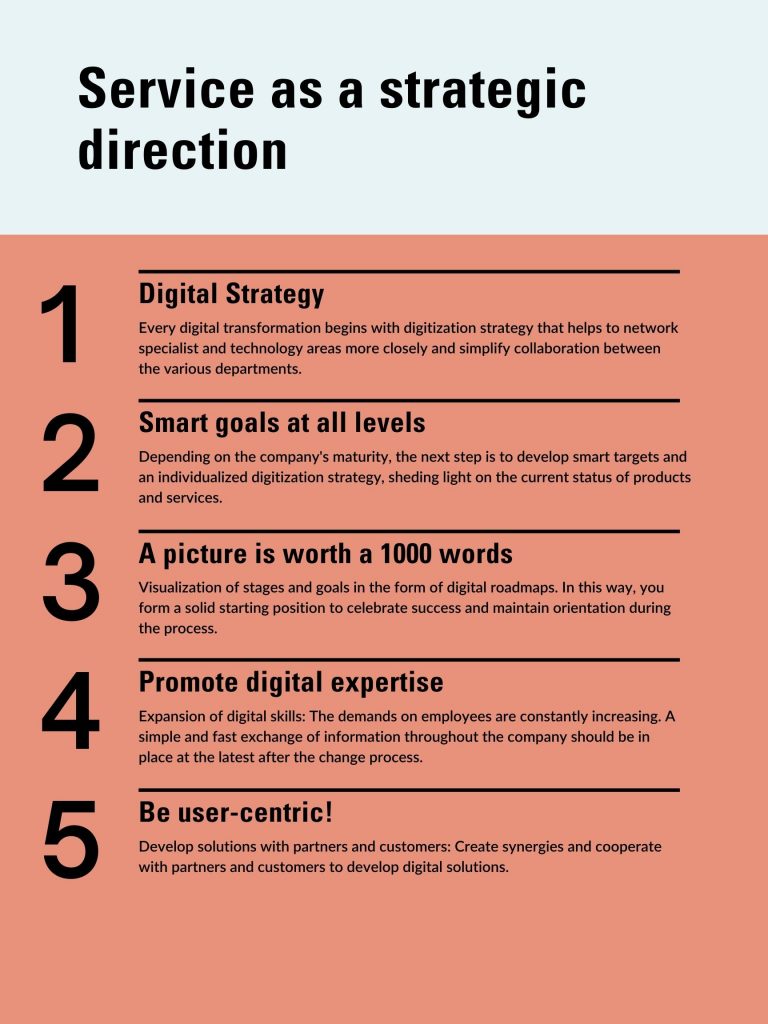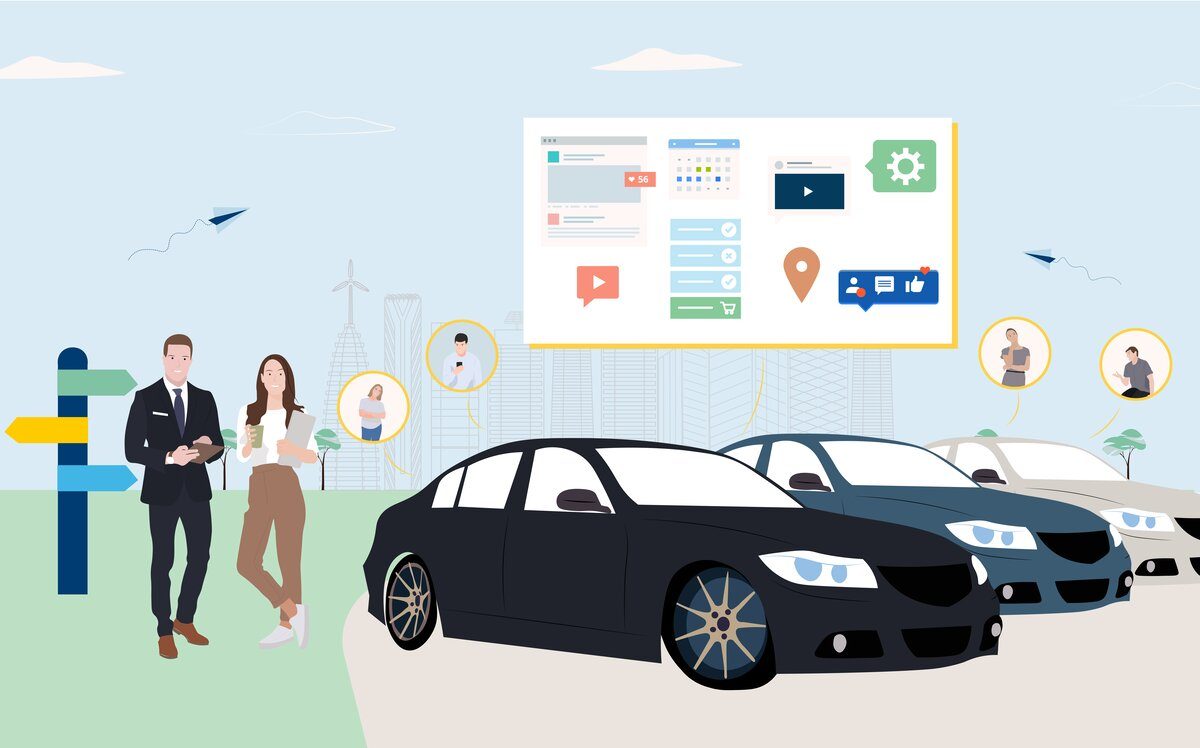Changing customer needs
The demands placed on personal mobility have changed noticeably in recent years; the vehicle as a status symbol has become increasingly irrelevant for young people. Mile-long traffic jams, nerve-racking traffic conditions and ecological aspects are fueling the trend away from owning a car. Generations Y and Z are increasingly doing without their own vehicle, especially if they live in big cities. In contrast, car sharing or ride-hailing are becoming increasingly popular.
In order to continue to address the interests, priorities, and wishes of customers, automakers must push new business areas and focus on attractive services. At the core of this change is digital transformation, which is not possible without comprehensive digitization.
In our podcast, you can find out how BMW is tackling the digital transformation
Embrace (Digital) Change
However, the change for the automotive industry is far from over with the mere implementation of new services, such as carsharing services, to make the vehicles produced available to a broad user base.
New technologies such as the Internet of Things (IoT), blockchain and artificial intelligence enable the implementation of new business models, such as intelligent route planning based on live data. Car-to-car communication will also play an increasingly important role in the future, enabling even faster transmission of data in real time – a wonderful promise not only for commuters.
But in-vehicle voice interaction will also provide additional convenience. Both automakers and original equipment manufacturers (OEMs) are implementing voice recognition technologies into their systems to offer high-end products to drivers.
Voice interaction in the car has been around for a while: it started as integrated voice recognition systems on the steering wheel, able to respond to phrases and shaping the habits of consumers. Today, voice recognition is no longer just an interface for controlling functions, but actually true in-car entertainment.
Prof. Dr. Johann Füller, Professor for Entrepreneurship & Innovation at the University of Innsbruck
New business models in the digital ecosystem
Cross-sales and cooperative ventures with service providers in other industries offer numerous potentials for expanding the company’s own business opportunities. The vehicles of the future should also be geared toward comfort and practicality. For example, cooperations with entertainment providers such as Netflix could enable more pleasant travel in the future. The start-up holoride impressively shows how in-car entertainment can be revolutionized and XR can be experienced in the vehicle. Learn more in our blog post about holoride.
Want more examples?
In the connected car, users communicate with the vehicle via their own mobile device. Another popular example of value-added services is last-mile navigation. This extends the navigation of the permanently installed navigation device to the smartphone and also navigates users to the desired destination on foot.
More and more manufacturers are also focusing on autonomous parking mechanisms that can be controlled using smartphones. In the long term, artificial intelligence will open up completely new possibilities, application contexts, and user experiences in autonomous driving.
These so-called functions on demand – i.e., the subsequent activation of features – make it possible to add further features to the vehicle after purchase. At BMW, this is possible not only for software but also for hardware. This means that additional functions can be activated on-demand without having to go to the workshop.
From pure hardware producer to software provider
Increasing electrification is leveling out competitive advantages for internal combustion engines, and optimization potential for modern e-motors is vanishingly small; differentiation is increasingly based on the functionalities and services provided. Here, the speed of implementation plays a key role in success.
Automobile manufacturers are thus moving away from the role of pure manufacturer of a product suitable for the mass market. Instead, they are focusing on the software in the vehicle and are increasingly assuming the role of the software provider. This software enables differentiation from the competition and is an opportunity to create new business models and value propositions.
And it brings another aspect: the connection to the customer does not end as soon as the customer drives the purchased car off the lot. The connection remains throughout the life cycle of the vehicle.
Automotive manufacturers and suppliers need new business models to actively shape change. Connected cars offer an additional opportunity to reach customers and stay in contact with them even after the car has been sold. Service licenses, among other things, could be a new source of revenue for car manufacturers in the future.
Prof. Dr. Johann Füller, Professor for Entrepreneurship & Innovation at the University of Innsbruck
A particular challenge in expanding the range of digital services lies in emotional customer loyalty. In principle, vehicle purchases are often characterized by emotional motives, resulting in a strong bond between buyers and the chosen brand. Manufacturers must transfer this bond to the new, digital products, because a successful digital transformation also knows and takes into account the customer experience. Digital solutions always focus on the customer, and automotive manufacturers must anticipate customer requirements and align their own business models with these requirements. Here, technology acts as an enabler.
Many vehicle manufacturers are evolving strongly from being providers of a product to being providers of services around the product. The product is still premium quality, but the importance of the product, the emotional association is increasing significantly in recent years.
Learn how BMW identifies customer needs and generates customer-centric added value in our podcast on Spotify.
Service as a strategic approach
First things first – The digitization of existing and the development of new business areas, offer unique opportunities to secure resources in the long term and to challenge corporate strategic thinking.
The following steps can be helpful:
1. At the beginning of every digital transformation, there is a digitization strategy that helps to link business and technology areas more closely and simplify collaboration between the various departments.
2. Depending on the maturity level of the company, the next step is to develop smart goals and an individualized digitization strategy that provides clarity about the current status of products, services and benefits.
3. Visualization of stages and goals in the form of digital roadmaps. This gives you a solid starting point to celebrate success and keeps you oriented during the process.
4. Expanding digital competencies: The demands on employees* are continuously increasing. A simple and fast exchange of information throughout the company should be in place at the latest after the change process.
5. Be user-centric! Develop solutions with partners and customers: Create synergies and cooperate with partners and customers to develop digital solutions.



